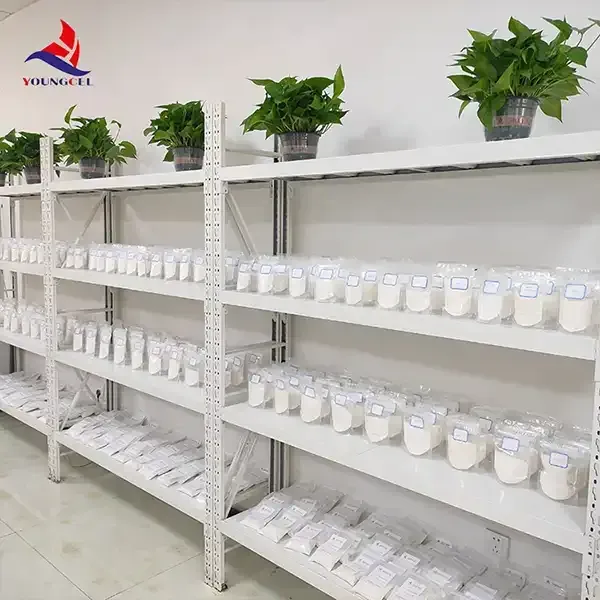The Importance of Cellulose Coating in Modern Applications
Cellulose, a biopolymer derived from the cell walls of plants, has seen a transformative application in various industries, particularly in the form of cellulose coatings. These coatings, known for their eco-friendly properties and multifunctionality, have garnered attention in fields ranging from food packaging to pharmaceuticals. As the demand for sustainable materials increases, cellulose coatings offer a viable solution that balances performance with environmental responsibility.
Understanding Cellulose Coatings
Cellulose coatings are formulated primarily from cellulose derivatives, such as cellulose acetate and carboxymethyl cellulose. These derivatives enhance the properties of raw cellulose, making them suitable for coatings that can be applied to various substrates, including paper, plastics, and metals. What makes cellulose coatings stand out is their biodegradability and non-toxic nature, which align with the global push for sustainability.
The process of creating cellulose coatings typically involves dissolving cellulose in solvents to form a hydrophobic or hydrophilic layer when applied. This adaptability allows cellulose coatings to be customized for specific applications, such as moisture resistance, barrier properties, or even cosmetic finishes.
Applications in Food Packaging
One of the most significant applications of cellulose coatings is in food packaging. Traditional packaging materials, such as plastics, often contribute to environmental pollution. In contrast, cellulose coatings can provide an effective barrier against moisture, oxygen, and other external factors that could compromise food quality. Moreover, because cellulose is derived from renewable resources, these coatings can significantly reduce the carbon footprint of packaging products.
Research has shown that cellulose-based coatings can extend the shelf life of perishable items, such as fruits and vegetables, extending market reach and minimizing food waste. By replacing conventional plastic coatings, manufacturers can appeal to eco-conscious consumers who are increasingly seeking sustainable options.
Pharmaceuticals and Biomedical Applications
In the pharmaceutical industry, cellulose coatings play a crucial role in the production of tablets and capsules. These coatings help mask the taste of bitter medications, improving patient compliance. Additionally, cellulose coatings can be engineered to enable controlled release mechanisms, allowing drugs to be delivered systematically over time. This targeted delivery promotes better therapeutic outcomes and enhances patient safety by minimizing side effects.
cellulose coating

Furthermore, cellulose's biocompatibility makes it an attractive option for biomedical applications, such as wound dressings and tissue engineering. Cellulose-based materials can facilitate healing while being naturally degradable, reducing the risk of chronic inflammation in patients.
Environmental Impact and Sustainability
As the world faces the urgent challenge of climate change, cellulose coatings emerge as a highly sustainable alternative to petroleum-based materials. The production of cellulose itself sequesters carbon dioxide, and when used in coatings, it substantially reduces reliance on non-renewable resources. Moreover, once disposed of, cellulose coatings can decompose naturally, contributing to a circular economy and reducing landfill waste.
Various industries are recognizing the benefits of adopting cellulose coatings, and many are transitioning their production methods to incorporate these materials. This shift not only enhances their green credentials but also positions companies competitively in an increasingly eco-aware market.
Challenges and Future Prospects
Despite the many advantages of cellulose coatings, challenges remain in terms of scalability and cost-effectiveness. The production methods for cellulose coatings can be complex, requiring advanced technology and significant investment. However, ongoing research and technological advancements are key to overcoming these hurdles, potentially leading to more efficient production processes and broader market adoption.
Future innovations may include the incorporation of additional functional properties, such as antimicrobial effects or enhanced barrier capabilities. As scientific understanding deepens, researchers are exploring ways to combine cellulose with other natural polymers to create composite materials that harness the best of both worlds.
Conclusion
Cellulose coatings represent a promising and dynamic area of innovation within materials science. Their versatility across various applications—from food packaging to pharmaceuticals—demonstrates their potential to address both practical and environmental challenges. As industries continue to seek sustainable solutions, cellulose coatings will undoubtedly play a significant role in shaping the future of materials, contributing to a greener, more sustainable planet. The move towards cellulose-based solutions signifies not merely a trend but a pivotal shift towards embracing the possibilities offered by nature's abundant resources.




